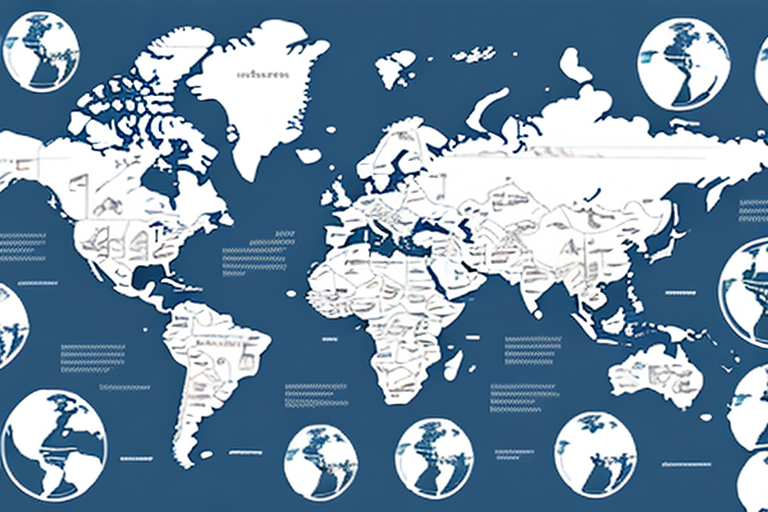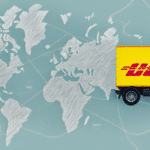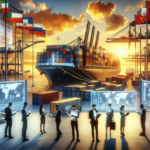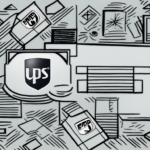Overview of the Largest Package Delivery Companies
The global package delivery industry is spearheaded by several major players, including United States Postal Service (USPS), FedEx, United Parcel Service (UPS), DHL, and TNT. These companies collectively handle billions of shipments annually, leveraging expansive logistics networks and advanced technologies to meet the growing demands of e-commerce and global trade.
United States Postal Service (USPS)
As the largest package delivery service globally based on the number of shipments, USPS processes approximately 47% of all mail worldwide. With a vast network across the United States, USPS offers a range of services from standard mail delivery to priority shipping, catering to both domestic and international customers.
FedEx
FedEx is renowned for its advanced tracking systems and real-time package monitoring. According to their latest financial reports, FedEx continues to expand its global footprint, particularly in emerging markets. However, its higher pricing compared to USPS can be a drawback for cost-sensitive customers.
United Parcel Service (UPS)
UPS maintains a strong presence both domestically and internationally, offering customized delivery options through programs like UPS My Choice. Their investment in technology has streamlined operations, although similar to FedEx, their pricing strategy may limit appeal for some consumer segments.
DHL
DHL, a German-owned company, has rapidly expanded its global presence, making significant inroads in international markets. Their competitive pricing for international shipments and focus on sustainability initiatives position them as a key player in the industry.
TNT
TNT, a Dutch company, primarily focuses on European markets, offering reliable delivery services with a strong emphasis on logistics optimization. Their strategic partnerships and regional expertise contribute to their steady market share.
History and Evolution of Package Delivery Services
The package delivery industry has evolved significantly over the past century. Starting with the establishment of United Parcel Service (UPS) in the early 1900s, the industry has witnessed numerous advancements in transportation and logistics.
Early Beginnings
UPS was founded in 1907, initially focusing on delivering telegraphs and later expanding to parcels and packages. The introduction of airmail in the mid-20th century revolutionized the speed and efficiency of package delivery.
Technological Advancements
The development of modern transportation systems, including the widespread use of trucks and airplanes, has dramatically improved the efficiency of package delivery. Innovations such as GPS tracking and automated sorting systems have further enhanced operational capabilities.
Challenges and Adaptations
One of the ongoing challenges in the industry is last-mile delivery, the final step of getting packages to customers' doorsteps. With the rise of e-commerce, companies are exploring solutions like drones and autonomous vehicles to address efficiency and cost concerns.
Impact of E-commerce on Package Delivery
The surge in e-commerce has had a profound impact on the package delivery industry, driving increased demand for reliable and efficient shipping services.
Growth in Shipment Volume
According to the eMarketer report, global e-commerce sales reached over $5 trillion in 2023, significantly boosting the volume of packages handled by delivery companies.
Adoption of Technology
To meet the demands of e-commerce, delivery companies have integrated advanced technologies such as mobile apps, real-time tracking, and automated sorting to enhance the customer experience and operational efficiency.
Security Measures
The increase in package deliveries has also led to a rise in package theft, or "porch piracy." In response, companies like UPS and FedEx have implemented enhanced security measures, including signature requirements and secure package lockers.
Financial Performance of Leading Delivery Firms
The financial health of major package delivery companies has been influenced by various factors, including economic conditions, fuel prices, and labor costs.
Revenue Growth
Despite challenges such as the COVID-19 pandemic, companies like FedEx and UPS reported significant revenue growth in 2023. FedEx's 2023 Annual Report highlights a revenue increase of over 10% compared to the previous year.
Economic Challenges
Rising fuel costs and labor shortages have necessitated price adjustments across the industry. These factors contribute to increased operational costs, impacting profit margins.
Future Projections
The package delivery industry is projected to continue its growth trajectory, driven by sustained e-commerce expansion and global trade. However, companies must navigate economic volatility and operational challenges to maintain profitability.
Technological Innovations in Package Delivery
Advancements in technology are revolutionizing the package delivery landscape, enhancing speed, efficiency, and customer satisfaction.
Real-Time Tracking
GPS tracking systems allow customers to monitor their package locations in real-time, improving transparency and reliability. This technology also enables companies to optimize delivery routes, reducing transit times.
Automation and Robotics
The use of automated sorting systems and delivery robots is streamlining operations, minimizing human error, and increasing processing speeds. Companies like Amazon and FedEx are investing heavily in these technologies to stay competitive.
Emerging Technologies
Innovations such as drones and autonomous vehicles are being explored to address last-mile delivery challenges. These technologies promise to reduce delivery times and operational costs, although regulatory and logistical hurdles remain.
Sustainability and Environmental Practices
Environmental sustainability has become a priority for package delivery companies, driven by regulatory pressures and consumer demand for eco-friendly practices.
Alternative Fuel Vehicles
Many delivery companies are transitioning to electric and hybrid vehicles to reduce carbon emissions. UPS, for example, has committed to deploying over 100,000 alternative fuel and advanced technology vehicles by 2025.
Optimized Delivery Routes
Route optimization software helps minimize fuel consumption and reduce greenhouse gas emissions. Implementing efficient routing strategies is a key component of sustainability initiatives.
Eco-Friendly Packaging
Companies are adopting sustainable packaging materials and promoting recycling to decrease waste. DHL has launched initiatives to use more biodegradable packaging and reduce overall packaging volume.
Future Trends and Challenges in Package Delivery
The package delivery industry is poised for significant changes as it adapts to evolving market demands and technological advancements.
Adoption of AI and Machine Learning
Artificial intelligence and machine learning are being leveraged to predict delivery patterns, optimize logistics, and enhance customer service. These technologies enable more efficient operations and personalized delivery experiences.
Globalization and Market Expansion
Delivery companies are expanding into new international markets to capitalize on emerging economies. However, this expansion comes with challenges such as navigating diverse regulatory environments and cultural differences.
Cybersecurity Concerns
As operations become more digital, the risk of cyberattacks increases. Protecting sensitive customer data and maintaining secure logistical systems are critical priorities for the industry.
Conclusion
The package delivery industry remains a cornerstone of the global economy, facilitating commerce and connecting consumers worldwide. As the industry navigates challenges such as technological disruption, sustainability demands, and evolving consumer expectations, the ability to innovate and adapt will be crucial for continued success.
By embracing new technologies, optimizing operations, and prioritizing sustainability, leading package delivery companies can maintain their competitive edge and meet the dynamic needs of the modern marketplace.




















